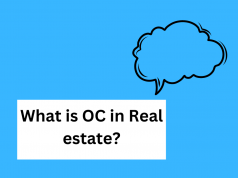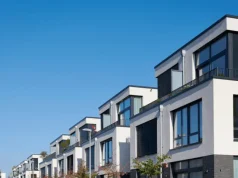Choosing the perfect place to call home is an exciting journey. It is also quite an important one as your entire life will revolve around that decision of yours. Your life can either be very easy and fulfilling or become a difficult and energy-draining endeavor. Whether you’re looking to settle down or invest, understanding the different types of residential properties in India is essential.
In this blog, let us check out the various ways in which Indians choose to live. We will get to the crux of each type of residential property and understand to whom specific types of properties are suitable. This would tremendously benefit you and make your house-hunting a pleasant and memorable experience. Read on to explore your options.
Also Read: how to buy property online
Apartment Living
Imagine multistoried buildings rising high against the cityscape, offering a vibrant community within. This is literally what it would be like.
Apartments, or flats, are the go-to choice for many in larger cities and busy towns. All age groups would like a specific aspect of apartment living. They come in various sizes and styles, but what they all have in common are convenience and amenities. In these gated communities, you’ll find grocery stores, play areas for kids, gyms, temples, parking facilities, and dedicated maintenance teams. A monthly ‘maintenance fee’ covers these amenities.
Pros of Apartment Living
- You’ll find thriving communities and 24/7 security, making it a safe and social choice.
- Apartments are budget-friendly, offering easy access to a range of amenities.
- Getting a loan for an apartment is generally more straightforward.
Cons of Apartment Living
- Making structural changes might need approval, limiting customization.
- Apartments often share a uniform design, which can limit personalization.
Single-Family Homes
Let us venture into the single-family homes, often referred to as “freehold residential property.” This type of residential property must be the most common and widely adopted way of living by most people.
These homes stand-alone, with no shared walls. You can design them as you wish, adding rooms as your family grows. Enjoy complete privacy, but be ready to shoulder the upkeep and costs. Basic amenities might not be at your doorstep, and it’s relatively more expensive than apartments.
Pros of Single-Family Homes
- Enjoy greater flexibility in designing your living space according to your preferences.
- Experience maximum privacy with no shared walls, creating a secluded atmosphere.
Cons of Single-Family Homes
- You’ll bear full responsibility for the maintenance of your property.
- Single-family homes typically offer fewer shared amenities compared to other housing options.
Condominium Lifestyle
Ever thought of living in a house within a building?
Condominiums offer multiple houses within a single building, each with its unique design. You might share a common wall with your neighbors, but there’s an association to handle building maintenance. This residential property comes with amenities like swimming pools, parking lots, and power backups that are commonly shared.
Pros of Condominium Living
- Condominium living is practically maintenance-free, allowing you to enjoy your space without the hassle of upkeep.
- You get to share the cost of amenities with your neighbors, making them more affordable.
- Condominiums offer unique house designs, adding character to your living space.
Cons of Condominium Living
- Remodeling options are somewhat limited, given that certain changes may require approval.
- Keep in mind that condominium living often comes with reduced privacy compared to single-family homes or bungalows.
The Bungalow Life
Are you charmed by single-story living? A bungalow might be your ideal choice.
Bungalows, including villas and cabins, are a type of residential property that offers a simpler layout with all rooms on one floor. They often come with ample open space, providing privacy and a healthier environment. However, security levels might not match those of apartments or condos, and you’ll be solely responsible for maintenance.
Pros of Bungalow Living
- Bungalows offer a simpler layout, making it easier to maintain and navigate.
- You’ll have more open space around your property, providing enhanced privacy and a healthier environment.
Cons of Bungalow Living
- In terms of security, bungalows may have lower levels of protection compared to multi-story options like apartments or condominiums.
- Keep in mind that you’ll bear full responsibility for the maintenance of your bungalow, which includes both interior and exterior upkeep.
Multi-Family Homes
Imagine multiple families coming together to build a residential property, with each unit belonging to an individual family. Welcome to multi-family homes!
These homes can be multiple floors or a row of houses, ideal for joint families or even for renting out surplus units. Safety is greater due to proximity, and amenities can be shared. However, changes post-construction require consensus, and selling individual units can be challenging.
Pros of Multi-Family Homes
- Multi-family homes are ideal for joint families, providing separate units for each family under one roof.
- The cost-sharing aspect allows for more affordable access to amenities and shared facilities.
Cons of Multi-Family Homes
- Privacy can be somewhat limited in multi-family homes due to proximity to other families.
- Selling or renting individual units in a multi-family home can be challenging, as potential buyers or renters may be concerned about shared living spaces.
Want to delve deeper into the world of housing options? Also read: Best place to buy residential plots in Bangalore to expand your knowledge and make an even more informed decision.
Wrapping Up
Residential property designs in India vary from place to place. Sometimes, you can find the features of a freehold house in a condominium or the safety of a multistoried building in a multi-family home.
As you start on a journey to find your dream home, consider your preferences and priorities. Create a personalized checklist to guide your decision-making process. Remember, every type of residential property has its own unique set of pros and cons.
Is there a better way? For sure! Propex.ai can help you find the residential property that is perfect for you and your loved ones. You might be wondering, “but how?”.
Propex.ai systematically organizes all the properties in a coordinated manner such that shopping for your new home is as simple as browsing for that dress on an e-commerce platform!
With most of the top properties listed on this platform, you don’t ever have to get out of it. You can understand all the details and even get all the information you need about the particular real estate that you’re interested in. Don’t believe us? Find out more and form your opinion yourself.





